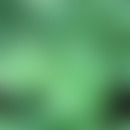Synonym(s)
DefinitionThis section has been translated automatically.
A member of the nettle family (Urticaceae), which occurs almost worldwide. In Germany there are 4 species: the large stinging nettle, the small stinging nettle, more rarely the reed stinging nettle or the pill stinging nettle. The large nettle (Urtica dioica) grows up to 1.5 m high, the small nettle (Urtica urens) up to 80 cm. Both belong to the Urticaceae (nettle) family and have square, upright and unbranched stems with stinging hairs. The stinging hairs on the leaves and stems contain formic acid, acetylcholine, serotonin and histamine. After contact, an urticarial rash, urticae, develops. The stinging effect is lost with scalding or drying. Whitish to light green flowers, flowering time is from May to October, the fruit is a nut.
The dried leaves (nettle leaves - Urticae folium), the dried herb (nettle herb - Urticae herba) and the roots (nettle root - Urticae radix) of the small and large nettle are used phytotherapeutically.
General informationThis section has been translated automatically.
Urtica dioica L. (dioecious stinging nettle) and Urtica urens (small stinging nettle) are the parent plants for Urticae herba/folium the stinging nettle herb/leaves and for Urticae radix the stinging nettle root. Monographs of Commission E are available for all extracts.
The extracts are used for naturopathic purposes and are mainly applied in urological diseases.
OccurrenceThis section has been translated automatically.
4 species are common in Germany: the large nettle, the small nettle, more rarely the reed-burning nettle or the pill-burning nettle.
LiteratureThis section has been translated automatically.
- Daneshmand P et al. (2016) Neuroprotective Effects of Herbal Extract (Rosa canina, Tanacetum vulgare and Urtica dioica) on Rat Model of Sporadic Alzheimer's Disease. Avicenna J Med Biotechnol 8:120-125.
- Qayyum R et al. (2016) Mechanisms underlying the antihypertensive properties of Urtica dioica. J Transl Med 14:254.
- https://arzneipflanzenlexikon.info/brennnessel.php
- https://www.pharmazeutische-zeitung.de/die-brennnessel-ein-kraut-mit-vielen-eigenschaften-130345/
- Wenigmann M. (2017) Phytotherapy medicinal drugs, phytopharmaceuticals, application. Urban & Fischer, p. 87-88
- https://pflanzen.fnr.de/industriepflanzen/arzneipflanzen/pflanzen-datenbank
- https://www.awl.ch/heilpflanzen/urtica_dioica/brennessel.htm



